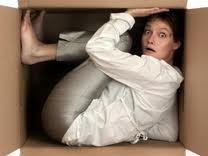In terms of treatment for Specific Phobias, the research literature consistently demonstrates that the most effective intervention for any type of Phobia is Cognitive-Behavior Therapy (CBT), with a strong emphasis on Exposure & Response Prevention (ERP). My therapeutic approach depends heavily on the use of Cognitive Therapy treatment strategies which first involve helping the patient to become more aware of, and subsequently change, perceptions and typical interpretations of daily events in their lives (e.g., "the dog will attack me and I will require emergency room treatment"), which create behavioral or emotional discomfort. That is, I first help the patient to better understand their current thought patterns which they frequently use to predict specific outcomes, as well as how these outcomes are often catastrophized. I then help patients to explore other possible interpretations/predictions regarding these outcomes; interpretations that they may not be accustomed to thinking about. In other words, encouraging my patients to widen their "perspective lens" by getting into the habit of saying..."wait a minute, is there another way that I can view this situation, a way that is different than my typical manner of explaining to myself why something just happened, or may occur in the near future".
Once this goal has been accomplished, I then begin the Behavior Therapy component of the treatment program for Specific Phobias, which incorporates the use of Exposure and Response Prevention (ERP) strategies, while at all times working together with the patient, at his or her own pace. As a result of these goals, it is common to assign weekly out-of-office planned exposure exercises to perform, in addition to various "behavioral experiments", related to the phobic object or situation, thus allowing for the practice of newly learned skills acquired during each therapy session for the purpose of enhancing and maintaining skills learned within the treatment setting, to the individual’s home, school, community or work environments. Yes, the Center for Anxiety p& Chronic Worry performs short-term Cognitive-Behavior Therapy (CBT) services for the treatment of Specific Phobias and Related Anxiety Disorders, I always have my patients' best interests in mind, realizing that everyone is unique, and thus my short-term Cognitive-Behavior Therapy treatment protocols are always individually based. I "take what the patient gives me" during session #1 (i.e., their initial skill level, readiness level, etc.), and then teach additional skills needed to obtain treatment goals, one Cognitive-Behavioral step at a time. For more information on Phobias, please visit the Obsessive-Compulsive Foundation and the Anxiety & Depression Association of America web sites.
Copyright © 2014-2021: Center for Anxiety & Chronic Worry
All rights reserved: Barry C. Barmann, Ph.D.
937 Tahoe Blvd. Ste. 205 Incline Village, NV. 89451
Tel. 775.831.2436
